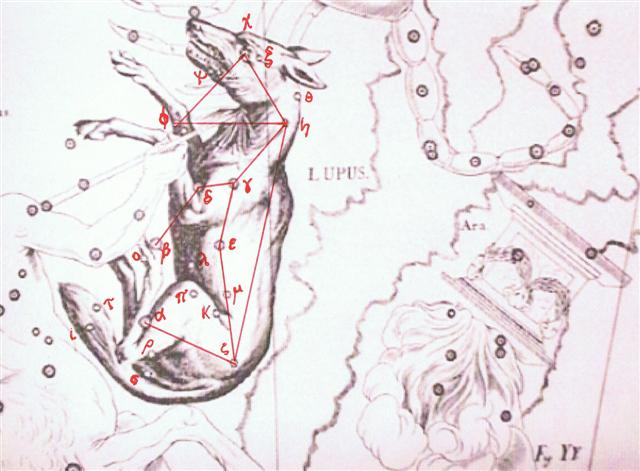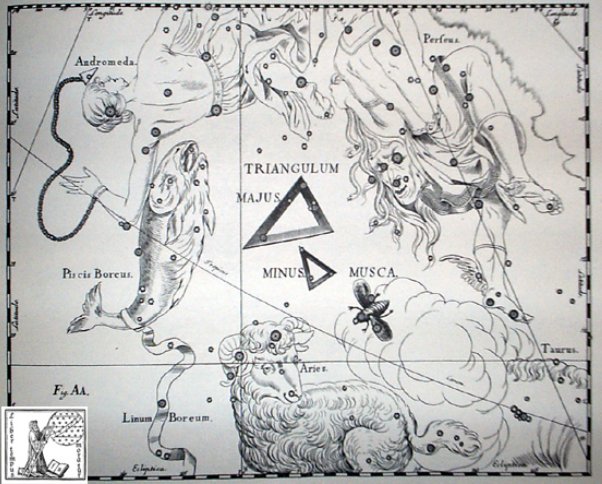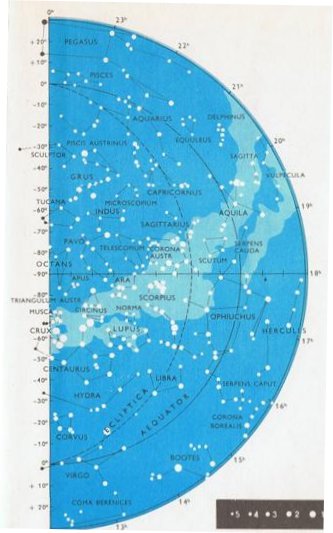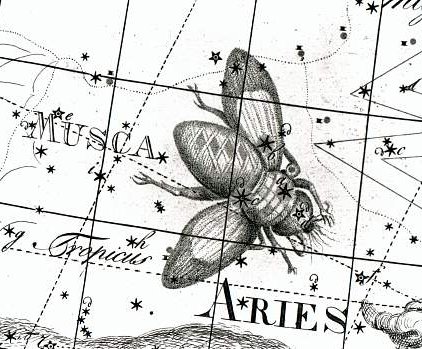One could think it strange to find Lupus (clearly a winter character) in front of the Centaur - should it not be more in place to have the Centaur arriving after the Winter (the Wolf)? And should we not turn the wheel of time another quarter backwards to locate the Centaur around the northern spring equinox?
I think part of an answer to these questions lies in the distinction between constellations and ruling stars. The ruling star of the Centaur is at his right front hoof and very close to the ruling star of the Wolf. Today Toliman (α Centauri) was rising the day before Yang Mun (South Gate), the star α at the left back shin (Sun) bone of Lupus. Although far in ancient times their relative positions may have been slightly different because of their proper motions:
According to the calendar from the times of Al Sharatain we have to turn our Sun wheel of time (the Gregorian calendar) first 4 days ahead from ºOctober 24 (*217) to *221 in order to find the correct position of heliacal Toliman in rongorongo times. Yang Mun was at Tagaroa Uri 29 (302), which corresponded to a date 27 days earlier, viz. to 'October 2 (275), when in rongorongo times Bharani began to be close to the Full Moon - the Head of the Fly was already there. South of the equator it was spring and early 'April:
When in the northern summer the sky was high above instead of low as in winter it enabled the viewers in the night to observe constellations far in the south, such as the Centaur and the Wolf. The sky dome was uplifted.
In midwinter the sky dome was low and the view was therefore pushed further toward the north, where the Square of Pegasus and Andromeda were located. From there the path of the Sun went south via Pisces, Aries etc. The asterism Musca Borealis (Bharani) belonged in Aries. At midsummer the ecliptic had reached its highest point and from this apex everything declined in response to the waning Sun. It was the opposite south of the equator, something which could be explained by saying that it was the Moon Queen who ruled down there, who in the season of Bharani gave birth:
Here the force of the Sun was used for killing (†), not for giving birth (*).
... From a religious point of view, the high regard for flies, whose increase or reduction causes a similar increase or reduction in the size of the human population, is interesting, even more so because swarms of flies are often a real nuisance on Easter Island, something most visitors have commented on in vivid language. The explanation seems to be that there is a parallel relationship between flies and human souls, in this case, the souls of the unborn. There is a widespread belief throughout Polynesia that insects are the embodiment of numinous beings, such as gods or the spirits of the dead, and this concept extends into Southeast Asia, where insects are seen as the embodiment of the soul ... | |||||||||||||||||||||||||||||||||||||||||||||||||||||||||||||||||||||||||||||||||||||||||||||||||||||||||||||









